Why 2025 is a good time to spy a rare sighting of Titan's shadow.
Nothing wows new observers like seeing Saturn for the first time. I always check out the ringed planet if it's visible, and telescopes down the line at any star party will invariably be pointed Saturn-ward to a chorus of 'oh's' and 'ah's'….
But 2025 gives you another reason to gaze at Saturn, as its largest moon Titan completes a series of rare shadow transits. Although Saturn now has 274 known moons, half a dozen of which are visible with a small telescope, Titan is the only one that casts a good-sized shadow.
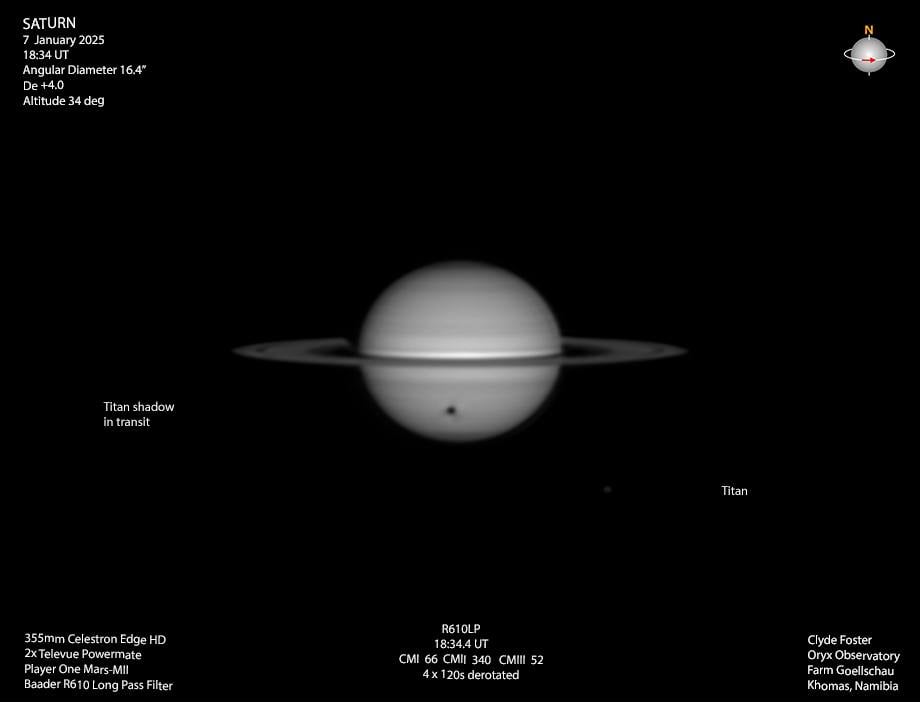 Titan's shadow from January 7th, 2025. Image credit:Clyde Foster.
Titan's shadow from January 7th, 2025. Image credit:Clyde Foster.
Transits in 2025
Titan orbits Saturn once every 16 days.In 2025, we just crossed Saturn's ring plane, a point around which shadow transits are possible. Unlike Jupiter, which has an orbit tilted only 1.3 degrees versus the ecliptic plane, Saturn's path is tilted a more generous 2.5 degrees. Add in the near 27 degree tilt of the planet, its ring plane and the general path of most of its moons, and you get a situation where the moons 'miss' Saturn… most of the time. Saturn's rings appear edge on twice during its 29.5 year orbit, giving us a short span when shadow transits can occur.
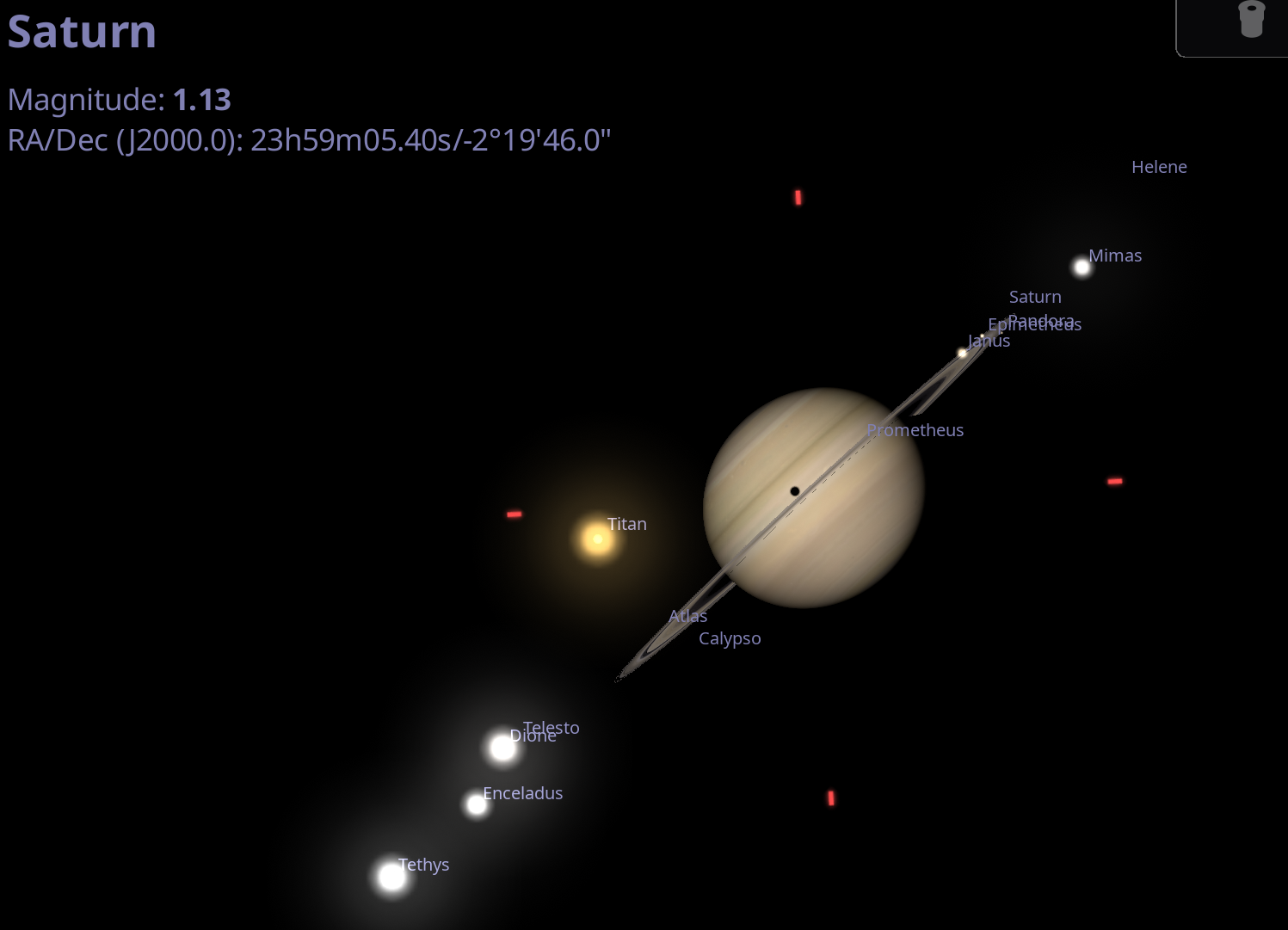 The May 15th shadow transit. Credit: Stellarium.
The May 15th shadow transit. Credit: Stellarium.
Jupiter's major Galilean moon Callisto is also the only one that can 'miss' Jove, and resumes shadow transits with a brief event next month on May 11^th^.
Shining at magnitude +8, Titan presents a 0.8" disk near opposition, a good match for the smaller Galilean satellites such as Io or Europa. Don't shy away from using moderate to high magnification, in the 150-300x range. Like the Galilean moons, Titan's shadow will appear like a tiny inky dot on Saturn.
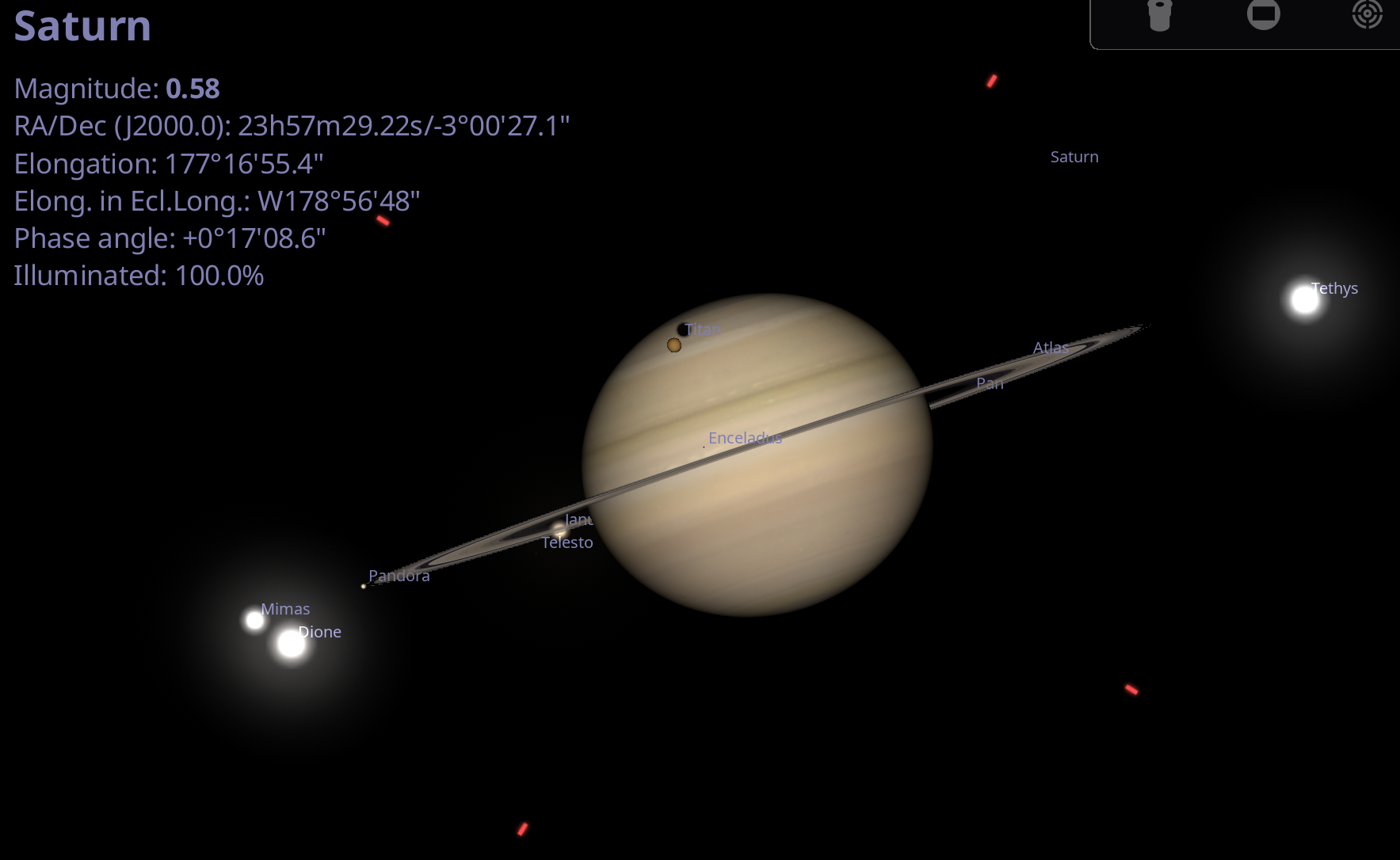 The September 20th shadow transit, very near opposition. Credit: Stellarium.
The September 20th shadow transit, very near opposition. Credit: Stellarium.
Titan transits are also long stately affairs, often in the six hour plus range. The good news is, the nearly one dozen 2025 events nearly all favor North America in the early morning hours, owing to the fact that Titan's orbit is nearly exactly 16 Earth days. In fact, they only slip back 45 to 30 minutes per apparition.
 2025 shadow transits for Titan. Credit: Dave Dickinson.
2025 shadow transits for Titan. Credit: Dave Dickinson.
First discovered by astronomer Christiaan Huygens on March 25^th^, 1655, Titan is larger than Mercury and would easily be considered a planet in its own right if it directly orbited the Sun. Bob King notes thatThe Planet Saturnby A.F.O.D. Alexander makes first mention of anyone seeing a shadow transit of Titan was actually William Herschel on November 2^nd^, 1789. Certainly, earlier astronomers, including Giovanni Cassini—who kept meticulous records of his observations of Saturn—had the optics and capability to see Titan's shadow, but thus far, no record of him completing this feat has turned up.
 A sequence featuring a 2009 shadow transit for Titan, seen by the Hubble Space Telescope. NASA/ESA/Hubble/STScI/AURA.
A sequence featuring a 2009 shadow transit for Titan, seen by the Hubble Space Telescope. NASA/ESA/Hubble/STScI/AURA.
Titan is also the only moon in the solar system with a substantial atmosphere. Credit for first sighting the haze around the moon usually goes to Gerard Kuiper in 1944, though there's evidence that Josep Comas i Solá first made note that something was special about the moon way back in 1907, observing the moon with the Fabra Observatory in Barcelona's 15-inch refractor.
NASA opted to get a first closeup look at the moon in 1980 during a flyby of Voyager 1, a maneuver that sent the spacecraft out of the plane of the solar system. This first close pass revealed a featureless world shrouded in a methane-ethane haze. True exploration of Titan had to wait until NASA's Cassini arrived in 2004, and dispatched ESA's Huygens lander to touchdown on the moon on January 14^th^, 2005. With any luck,NASA's Dragonfly nuclear-powered, quad-copter mission will launch to explore the enigmatic moon on 2028.
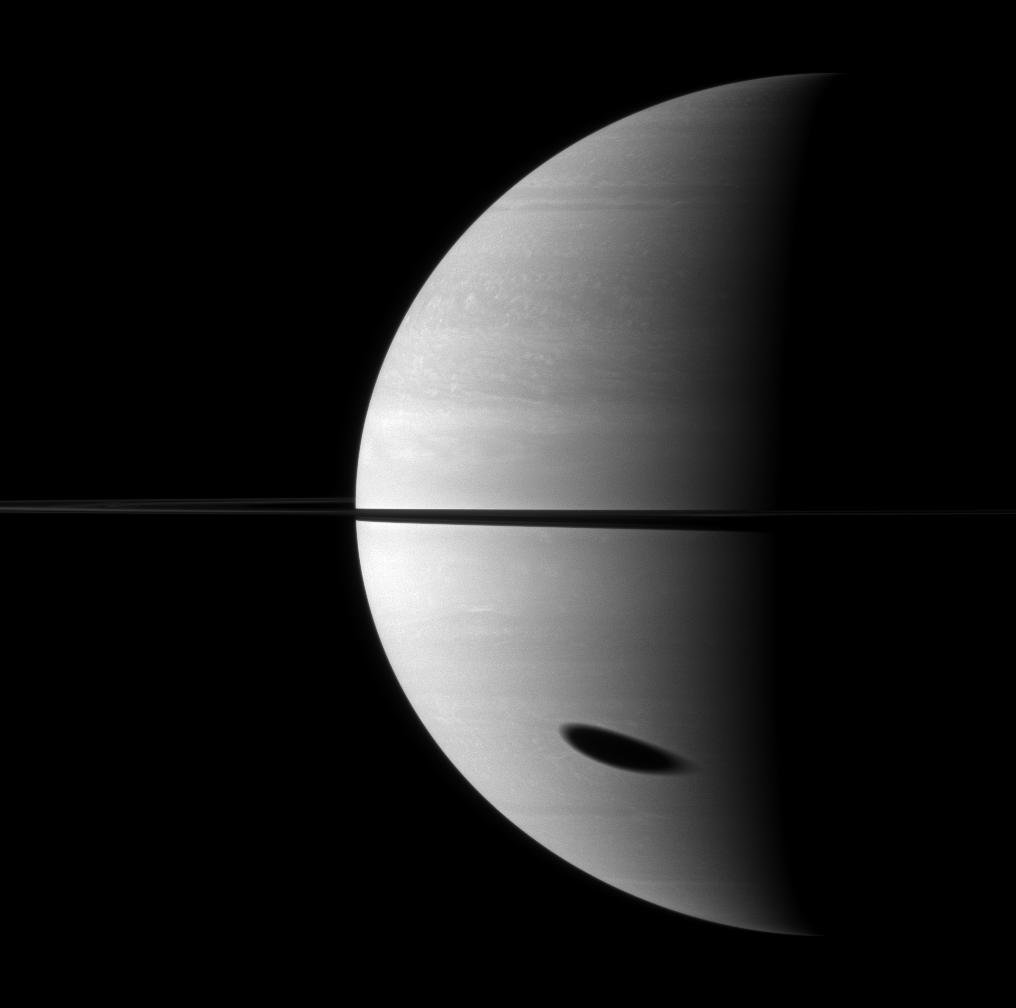 Cassini spies Titan's shadow on Saturn. NASA/JPL/Cassini/Space Science Institute.
Cassini spies Titan's shadow on Saturn. NASA/JPL/Cassini/Space Science Institute.
Titan's shadow has turned up in some strange places… the Chandra X-ray Observatory actually nabbed the x-ray silhouette outline of the moon crossing the Crab Nebula (Messier 1) in January 5^th^, 2003.
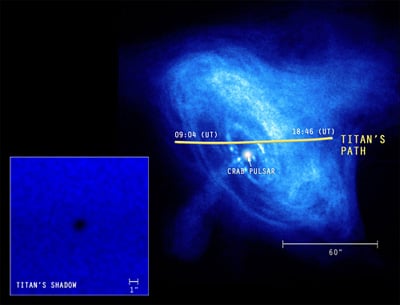 Titan's shadow crosses the Crab Nebula pulsar. Credit: NASA/Chandra.
Titan's shadow crosses the Crab Nebula pulsar. Credit: NASA/Chandra.
Don't miss a chance this year to complete a rare feat of visual athletics, and see Titan's shy act of shadow play in 2025.
 Universe Today
Universe Today
